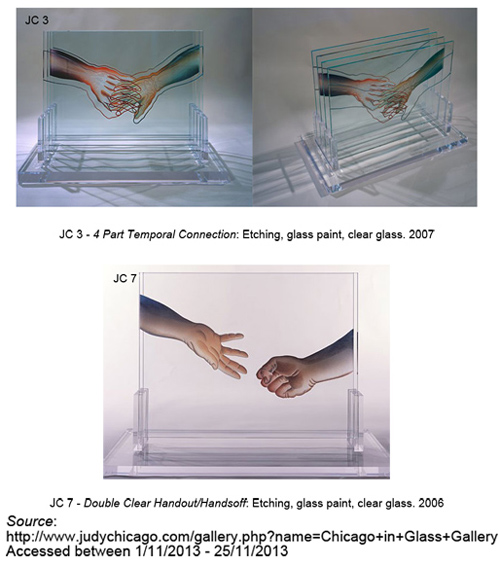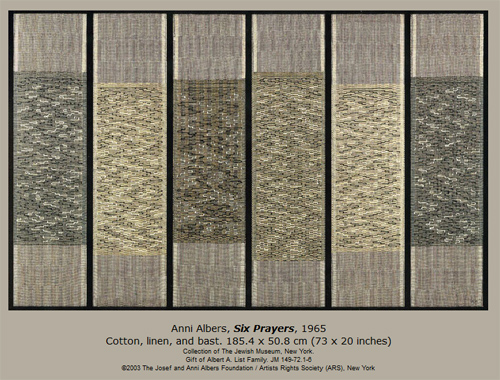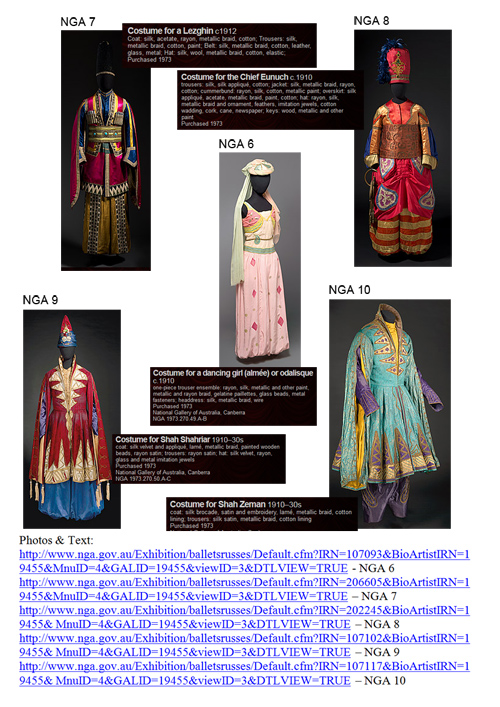Continuing research
I’ve spent the last couple of weeks collecting data, reading books, magazines, websites and articles relating to the 10 artists I’m currently researching, as well as visiting galleries and mulling over the future artists I am considering featuring as my own choices further into this assignment.
Whilst we are not required to write extensively about each of them I’ve decided to write a few lines of general observations.
Margaret Macdonald Mackintosh
As one of The Glasgow Girls, attending the Glasgow School of Art, Margaret was instrumental in evolving decorative and interior design. She became one of ‘The Group of Four’ but although extremely talented when she died there was little mention of her in the press as it seems she lived partly in the shadow of her very talented husband.
She worked in a wide range of mediums, producing works of art in various forms. Her skills included media such as metalwork, embroidery, textiles, watercolour, drawing and painted design for panels and furnishings.
I particularly enjoy her depictions of women, elongated and stylised, often encompassing symbols such as the rose, which was an extremely popular motif of her set at the time. (Google images ‘summer margaret macdonald’ for visuals)
Judy Chicago
Celebrating her 75th birthday next year Judy Chicago is best known for her work The Dinner Party (Google images will retrieve many results). This work, 5 years in the making and with the participation of hundreds of volunteers, has been exhibited 16 times, with venues covering 6 countries. It has been, and continues to be, written about extensively. It depicts a symbolic history of women in Western Civilization. An extremely complex and engaging work which I would dearly love to see.
She later undertook another huge venture entitled Birth Project. Another 5 years and 150 skilled needleworkers brought this into being, with the works having been exhibited in more than 100 venues.
Not publicized much are her works in glass, on her website, which have caught my attention.
 Above are a couple of examples but she also casts glass and creates striking artworks of hands and heads. Hand in particular are such an expressive human tool. They can convey power, hatred, hurt, dismissiveness, friendship, welcome, inclusiveness, gentleness, connection ……… We all talk with our hands. Perhaps sometimes we should consider more carefully what we are ‘saying’. Her cast glass heads are also worth reflecting upon.
Above are a couple of examples but she also casts glass and creates striking artworks of hands and heads. Hand in particular are such an expressive human tool. They can convey power, hatred, hurt, dismissiveness, friendship, welcome, inclusiveness, gentleness, connection ……… We all talk with our hands. Perhaps sometimes we should consider more carefully what we are ‘saying’. Her cast glass heads are also worth reflecting upon.
Issey Miyake
A name we all know, I’m sure. He first gained attention whilst studying at Tama Art University when he focused on clothing as design instead of as fashion. His outlook has never changed, as can be seen by following his clothing designs over the past 40+ years. Much of his process has been based on the idea of one piece of cloth, covering the body and forming a relationship therein. The space between cloth and body is just as important as the garment itself.
Miyake also revolutionised the way pleating is considered. He developed methods to create permanent pleating in synthetic fabrics which, with a number of collaborators, were developed during the 1970s. However, unlike his contemporaries, who pleat fabrics before cutting and constructing garments, Miyake first cuts and sews the garments – around 3 times larger than the finished article – before applying the industrial process to form permanent pleats.
An extremely successful businessman, he has a group of companies / affiliate group entities which continue to innovate and extend his value of free thinking that is unconventional, pushing the boundaries of what is possible as materials and technologies evolve.
Anni Albers
Anni studied at the Bauhaus School, arriving in 1922, where she took up weaving under the tutelage of Paul Klee (a name my tutor recently introduced me to). My reading indicates that she is considered one of the finest textile designers of the twentieth century and researching many of her woven works created over an extended period I can see why.
 Source: http://www.albersfoundation.org/Albers.php?inc=Galleries&g=i790
Source: http://www.albersfoundation.org/Albers.php?inc=Galleries&g=i790
When World War 2 commenced she and her husband moved to the United States where they remained and worked, travelling frequently to Mexico and other places – Mexico being the most visited. Later in life Anni abandoned weaving and took up printmaking. Her woven art pieces have stood the test of time with designs that continue to excite and inspire weavers today.
Ethel Mairet
Another weaver but also a dyer. Her work comprised of hand-spun wool, silk and cotton, all vegetable dyed and generally woven in stripes, blocks or checks. She produced items including wearables such as jackets, scarves, stoles and wraps as well as furnishing fabrics.
As I have recently done some natural dyeing I was thrilled to find on-line The Project Gutenberg eBook, Vegetable Dyes, by Ethel M. Mairet, with the text:
This eBook is for the use of anyone anywhere at no cost and with almost no restrictions whatsoever. You may copy it, give it away or re-use it …….. (Source: http://www.gutenberg.org). So if you are interested in vegetable dyeing feel free to access this wonderful resource:
www.gutenberg.org/files/24076/24076-h/24076-h.htm
Tracey Emin
Known most prominently for the installations My Bed and Everyone I Have Ever Slept With 1963-1995 Tracey Emin has been a prolific exhibitor, both solo and within group situations, for many years. Her range covers drawing, writing, neon works, large wall-hangings and installations. There is much about her on the internet including youtube videos, some of which I watched. She is very candid and outspoken, sometimes even quite rude, and on occasion drunk. Her work usually incorporates text, which both my tutors have urged me to consider myself. So that has been an interesting feature to focus on.
She admits that she creates her best work when happy but is rarely in that state, and her work certainly does not portray any point of pleasure in her life. She professes to be bored by interviews as she finds them draining and repetitive and I can see why. I found them draining, repetitive, and even boring, listening to her drone on without any inspirational content, rather a litany of the abuse and generalised hard time much of her life has dealt her.
I ask myself why her work is considered art? Why is an unmade bed with a lot of detritus littered around considered something worthy of exhibiting? Probably the most valuable thing I managed to glean from her interviews is that she considers herself a conceptual artist, it is all about the idea not the execution. That’s one point on which she and I would agree.
Leon Bakst
Having seen the Ballet Russes costume exhibition in Canberra I was pleased to find Leon Bakst on the list to explore.
Before becoming interested in theatrical production and costuming Bakst produced illustrations for magazines and children’s books. He then moved into designing stage sets and costumes, which became masterpieces of their time with an abundance of colour and style that greatly enhanced the sensational stories enacted. He became the main set designer for the Ballet Russes, bringing innovations and opulence to both the stage and the players. Costumes were not only enhanced by stitching, appliqué, beading and trims, but brightly coloured and metallic paints were also applied to the fabric surfaces.
 Lesser known is some of his textile design work produced in watercolour on paper and intended for the fashion market. Some interesting examples can be viewed at http://thetextileblog.blogspot.com/2013/10/textile-pattern-work-of-leon-bakst.html
Lesser known is some of his textile design work produced in watercolour on paper and intended for the fashion market. Some interesting examples can be viewed at http://thetextileblog.blogspot.com/2013/10/textile-pattern-work-of-leon-bakst.html
Lucienne Day
Primarily a designer of printed textiles Lucienne Day created furnishing and fashion fabrics, carpets, ceramics and table linen. She designed for many well-known companies including Stevenson & Son, Marks & Spencer, Horrocks, John Lewis, Habitat and Heals. Her partnership with Heals lasted 25 years and resulted in over 70 designs. In collaboration with her husband, Robin, a furniture designer of great note, they worked on large commissions for companies and places including the Royal Festival Hall and BOAC (developing an aeroplane interior scheme and a refreshment tray).
She had an interest in graphics, line work, scribble and abstraction and often created fabrics as blocked colour backgrounds with overlaid black linear patterning. Sometimes this overlaid line work was enhanced further by replicating the shapes with printed colour (Google images: perpetua lucienne day – will give some wonderful examples of this).
Zandra Rhodes
After finishing her studies in 1964 she and other British fashion designers of the time were soon catapulted into the limelight in what is described as ‘the hippy look and antifashion movement’. The simple classic lines of early 1960s clothing radically changed to reflect the hippy scene of secondhand and casual attire which continued into the early 1970s.
This revolution morphed into the flower power movement and the bohemian hippy style suited the designs of Zandra Zhodes with her inspirations coming from cultures such as Ukrainian peasants and North American Indians. Ever evolving, she continued innovating and producing up to the minute clothing as fads and movements changed over the years. Even as punk became prominent she was ready with ripped, pinned and chained garments.
She founded The Fashion and Textile Museum in London which showcases exhibitions exploring fashion, jewellery and textiles as well as containing an Academy which runs creative courses.
An exciting designer still with her own unique style today.
Magdalena Abakanowicz
This is a name I didn’t know until this research and I find myself fascinated by her monumental sculptures.
In the 1960s she created huge three-dimensional forms which she called “Abakans”. They were woven by herself and although they resemble large garment sections they are more like standing carpets or shrouds. Moving forward she changed both scale and material, using burlap and resin, later bronze, stone, wood and iron, but always in the form of enormous sculptures.
 More recently she has created armies of headless bodies – sounds quite odd but they are extremely engaging in their varied groupings and positioning. These life-size works stand as an army, walk as a group or appear to run in a line. Their presence is often felt by the sheer number assembled as an exhibit. For example, HURMA (right hand picture) is a group of 250 life-size children and adults and it must be quite thrilling to wander amongst them.
More recently she has created armies of headless bodies – sounds quite odd but they are extremely engaging in their varied groupings and positioning. These life-size works stand as an army, walk as a group or appear to run in a line. Their presence is often felt by the sheer number assembled as an exhibit. For example, HURMA (right hand picture) is a group of 250 life-size children and adults and it must be quite thrilling to wander amongst them.
The realism of apparent movement achieved as each statue is individually made, from whichever medium, adds to the appreciation of the works and I am particularly entranced by her work BIRDS created in 2001 from iron and wire. They can be viewed here.
A trip to her website will introduce you to a massive range of her work, all unique and captivating.
And so ends this record of a tiny portion of what I have gathered over recent weeks.
Note: Credits have not been given here to every source I have gathered information from as these are my own recollections drawn and collated from many, many articles, books, websites, publications and blogs I’ve accessed, all of which are individually recorded and correctly credited in my hard copy research to be submitted to my tutor and course assessors.
